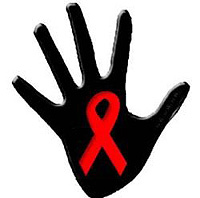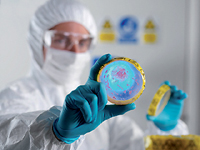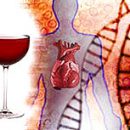Detect the virus is possible with special tests. The testing process consists in identifying antibodies that are produced by the body in response to the penetration of the virus.
Content
1st test - Immuno-immimensional analysis (ELISA)

This is the most common diagnostic method. Three months after the virus hit in the bloodstream, the number of antibodies can accumulate in the human body, which can define an immunoferment analysis. About 1% of cases it gives false positive or false negative results.
False negative result can be obtained if the antibodies to the virus did not have time to work out either at the terminal stage of AIDS, when the virus in the blood is so many that CD-4 cells and antibodies are almost absent. If you want to make sure that your negative result is actually false-negative, it makes sense to revoke ELISA again in 3 months.
The false positive result is mainly detected by examining patients with chronic infectious, autoimmune, oncological and some other diseases, as well as in the case of pregnancy. Therefore, any positive result must be checked on a more sensitive test - immunoblot. The positive result of the immunoblot after a positive ELISA is reliable by 99.9% - this is the maximum accuracy for any medical test.
2nd test - Immunoblot (IB)
This test determines the presence of specific antibodies to HIV. The result can be positive, negative and doubtful (or uncertain).
An indefinite result may mean that HIV is present in human circulation, but the whole range of antibodies has been developed by the body. As a rule, after 1-3-6 months from the moment of obtaining a dubious result in serum, one after another all antibodies and HIV appear. In this case, the dubious result is evidence of the initial stage of HIV infection. The indefinite result of the immunoblot may also mean that a person is not infected with HIV, but its body has antibodies similar to HIV antibodies. This result is in patients with tuberculosis, cancer, recipients receiving multiple hemotransphus (blood transfusions), in pregnant women. With an indefinite result of the IB, the patient is under the supervision of an infectious doctor and repeats the analysis after 1, 3 and 6 months.
3rd test - polymerase chain reaction (PCR)
It is used to define RNA and DNA virus. This is a very effective and sensitive reaction that allows you to obtain the result, exploring the DNA of just one cell by multiplying (or amplification) of specific DNA sequences. PCR is used for:
- determining the presence or absence of HIV himself during the period «window» and with a unclear result of the immunoblot;
- To determine which virus is present in the body - HIV-1 or HIV-2; - to determine and control the viral load;
- To determine the HIV status of newborns born from HIV-infected mothers;
- in blood transfusion services.
The sensitivity of this test is very high: it detects the virus itself, and after a short time (on average about 10 days) since the alleged infection. However, the same high sensitivity allows the test to react to many other infections, which leads to frequent false positive results. Therefore, according to the results of this test, the final diagnosis is never made.
PCR requires complex laboratory equipment and highly qualified specialists. The method is very expensive and therefore in the mass testing on HIV, which, according to the law, is carried out for the population for free, cannot be applied.
4th test - the so-called express test
It is applied in emergency situations (for example, during operations on life testimony or in childbirth). Execution test does not require complex equipment and high personnel qualifications, but its result must be subsequently confirmed by standard HIV testing.
Commize in the community









